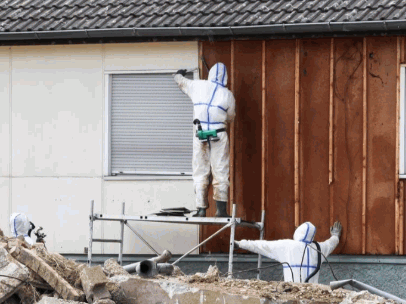Asbestos is a naturally occurring mineral that has been widely used for its heat resistance and durability, but it poses serious health risks, including various lung diseases and chronic respiratory issues.
This article explores the various types of asbestos, such as Chrysotile and Crocidolite, and where they can commonly be found—in buildings, household products, insulation, and industrial materials.
It will also discuss the alarming health consequences of exposure, including asbestosis, mesothelioma, and lung cancer, and provide practical tips on prevention, safe handling, and adhering to governmental guidelines.
Understanding asbestos, including its health risks and carcinogenic properties, is crucial for safeguarding health and well-being.
Asbestos exposure remains a significant risk factor for various health issues, emphasizing the need for strict safety measures and regulations.
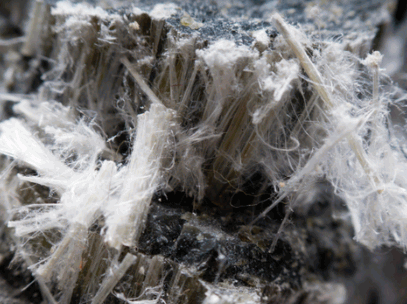
Contents
Asbestos is a group of naturally occurring fibrous minerals that have been widely used in various industries, notably in construction and automotive manufacturing, due to their desirable properties such as high tensile strength, resistance to heat, and insulating capabilities. Its applications extend to different products, involving both non-friable and friable forms.
Among the different types of asbestos, chrysotile, often referred to as white asbestos, is the most commonly used. However, asbestos exposure has serious health effects, including asbestos-related diseases such as asbestosis, mesothelioma, and lung cancer, which highlight the need for proper regulations and safety measures in handling asbestos-containing materials. Agencies such as the Occupational Safety and Health Administration and the Environmental Protection Agency play crucial roles in enforcing these regulations.
Find out more: How Much Does It Cost To Remove Asbestos Drywall
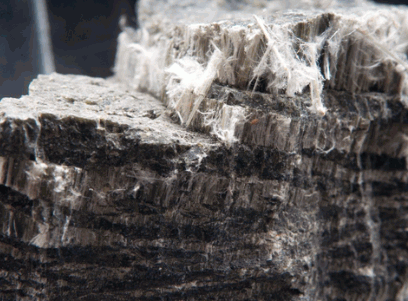
Asbestos is categorised into several types, each with distinct properties and risks, which include chrysotile, amosite, crocidolite, tremolite, actinolite, and anthophyllite.
Chrysotile, the most prevalent form, accounts for approximately 95% of asbestos used in buildings due to its flexibility and durability. Amosite and crocidolite, on the other hand, are often found in insulation and are known to be more hazardous due to their friable nature, leading to higher exposure risks.
Understanding these types is crucial for identifying asbestos in building materials and addressing the associated health risks, including chronic respiratory conditions and cancer.
Chrysotile asbestos, also known as white asbestos, is the most common type of asbestos found in a variety of products, particularly in building materials and insulation, owing to its high tensile strength and resistance to heat and fire. Its unique properties made it an appealing choice for the construction and manufacturing sectors for much of the 20th century, leading to its widespread use in products such as roofing tiles, brake linings, and pipe insulation.
Despite its beneficial properties, the use of chrysotile asbestos is fraught with significant health risks. Prolonged exposure to this mineral can lead to serious respiratory diseases, including asbestosis, lung cancer, and mesothelioma. Consequently, the regulatory landscape surrounding this material has evolved, with various countries, including the United States, implementing strict regulations and bans on its use in construction and consumer products. Organizations like the International Agency for Research on Cancer have classified asbestos as a carcinogenic substance.
Maintaining awareness of these health implications remains vital as industries navigate the challenging legacy of chrysotile asbestos.
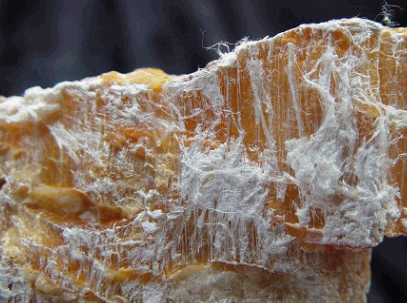
Amosite asbestos, commonly referred to as brown asbestos, is known for its superior insulating properties and resistance to heat, making it a popular choice in thermal insulation products and building materials, particularly in the mid-20th century. Its fibrous structure contributes to its effectiveness in sound absorption and fireproofing, which further solidifies its status in various industries. With the evolution of health and safety regulations, the historical usage of this material serves as a cautionary tale against the broader application of asbestos in construction and insulation.
Known primarily for its effectiveness in high-temperature applications, this type of asbestos has been utilised across several sectors including:
Despite its functional benefits, exposure to amosite asbestos can lead to severe health issues. Prolonged inhalation of asbestos fibres has been linked to various respiratory problems, including:
These conditions highlight the importance of adhering to stringent safety regulations and proper handling protocols when dealing with any materials that may contain asbestos, ensuring that both workers and the public are protected from its harmful effects. The National Institute for Occupational Safety and Health provides guidelines and support to enhance workplace safety.

Crocidolite, also known as blue asbestos, is recognised as one of the most dangerous types of asbestos due to its high level of fragility and ability to release airborne fibres, making it a significant health risk when found in insulation and construction materials.
This hazardous mineral, with its striking blue hue, has been historically utilised for its exceptional heat resistance and tensile strength in various industrial applications, including shipbuilding and pipe insulation. The very properties that made crocidolite attractive for use are also the source of its danger, particularly due to its friable nature, which increases the risk of airborne fibres.
As more awareness grows about the severe effects of crocidolite asbestos, stringent regulations have been put in place to protect public health, yet risks remain in older structures that still contain this lethal material.

Tremolite asbestos is not typically used commercially but can be found as a contaminant in other asbestos products, posing health risks similar to other forms of asbestos, especially when inhaled.
This naturally occurring mineral, known for its fibrous texture, often appears in products like insulation materials, roofing, and to a lesser extent, in some talc-based products.
Tremolite asbestos is predominantly found in metamorphic rocks and is often mined in conjunction with other types of asbestos. When these contaminated products deteriorate, tiny fibres can be released into the air, leading to severe health consequences for those who are exposed.
Therefore, it is crucial to identify and manage materials containing tremolite asbestos to protect public health and safety effectively. Proper ventilation and protective measures during renovations can mitigate the risks associated with this hazardous material.
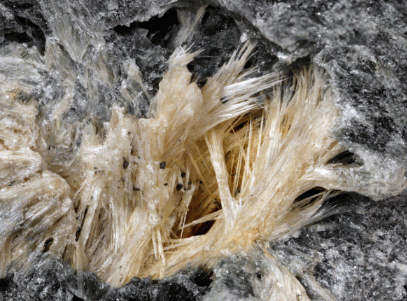
Actinolite asbestos is another less commonly encountered type of asbestos that can occur in various natural minerals and may be found in some construction materials, posing significant health risks upon exposure.
This particular variant of asbestos is often present in metamorphic rocks and can sometimes be inadvertently introduced into construction materials such as insulation, joint compounds, and surface finishes. It is important to understand that while actinolite asbestos is not as frequently discussed as its more notorious counterparts, such as chrysotile or crocidolite, its presence can still lead to serious health concerns.
Prolonged exposure to this mineral can result in respiratory ailments such as asbestosis, lung cancer, and mesothelioma, which underline the critical importance of recognising its characteristics during renovation or demolition activities. Individuals involved in construction or home improvement projects should remain vigilant and consider their environmental history:
Awareness about actinolite asbestos not only safeguards health but also ensures compliance with national regulations related to hazardous materials.

Anthophyllite asbestos is one of the rarer types of asbestos and is primarily found in certain natural rock formations, with limited use in building materials, yet still poses known health risks upon exposure.
This mineral is particularly noted for its unique composition, which lends it to both industrial applications and geological significance. It typically forms in metamorphic rocks, such as schist or gneiss, and can appear as fibrous strands that are easily disturbed.
Despite its infrequent usage, mainly in insulation materials and cement products, it possesses properties that can lead to severe health concerns. Prolonged exposure may result in serious conditions such as asbestos-related lung diseases, including mesothelioma, which has been widely documented in those who have come into contact with it. Appropriate medical diagnosis and treatment plans are essential for managing these conditions.
Due to its rarity, many remain unaware of its presence and associated dangers in older commercial or residential structures, emphasising the need for education, awareness, and safety measures when working in environments that may contain this potentially harmful and toxic substance.
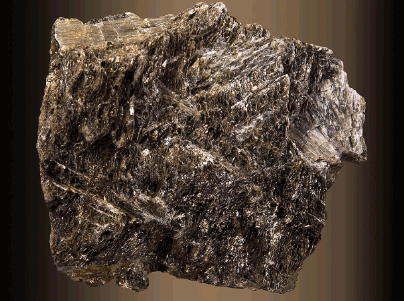
Asbestos can be found in various environments, including older buildings, household products, industrial materials, and even natural geological formations, which present significant health risks, especially if these materials are disturbed during renovations or construction activities.
In many regions, particularly in the United Kingdom, asbestos-containing materials were widely used throughout the 1980s and 1990s, leading to extensive regulations aimed at minimising exposure to this hazardous substance.
Asbestos was commonly used in many buildings and structures for insulation, roofing, and fireproofing purposes, especially in older constructions built before the 1980s, which can pose serious health risks to occupants and renovation workers.
These risks stem from the inhalation of asbestos fibres, which can lead to severe respiratory conditions, including asbestosis, lung cancer, and mesothelioma. Common building materials that may contain asbestos include:
When these materials are disturbed during renovations or repairs, the release of airborne asbestos fibres can significantly increase exposure risk. Consequently, there are strict regulations, such as the Asbestos Hazard Emergency Response Act (AHERA), which mandate proper management and disposal of asbestos-containing materials. Adhering to these regulations is crucial to ensure the safety of employees and residents alike.
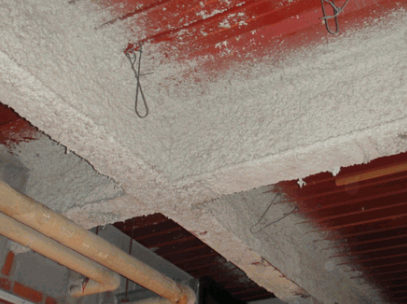
Many household products, including older insulation materials, floor tiles, and some appliances, may contain asbestos, creating potential health risks for consumers unaware of their presence in everyday items.
As a result, it becomes essential for property owners to remain vigilant and informed regarding these materials, especially in homes built before the 1980s. Products known to pose risks often include:
When evaluating a home, individuals should look for signs of wear or damage in these items, as disturbed asbestos can release harmful fibres into the air, posing serious health risks such as lung cancer and mesothelioma. It is advisable to consult professionals for testing and potential removal to ensure safety. Compensation for asbestos-related diseases can sometimes be sought through legal means or specific benefits like the industrial injuries disablement benefit.

Asbestos was widely used in various industrial products, including automotive brake pads, insulation materials, and construction products, due to its resistance to heat and chemical damage, posing significant health risks to workers in these industries.
This naturally led to a troubling legacy, as prolonged exposure to asbestos fibres can result in numerous serious health conditions, including lung cancer and mesothelioma. Many workers, particularly those in the manufacturing, mining, and construction sectors, encountered these hazardous materials daily, often without adequate protective measures.
In response to these grave implications, regulatory measures such as the Clean Air Act, the Environmental Protection Agency (EPA), and the Asbestos Hazard Emergency Response Act have been enacted to minimise exposure risks and promote safer practices within affected industries. These regulations aim to protect not only current workers but also future generations from the dangers associated with these once commonly used materials.
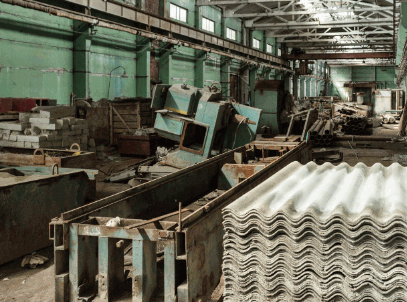
Asbestos is a naturally occurring mineral that can be found in certain geographical regions, which can lead to environmental exposure for individuals living near mining operations or natural deposits, raising significant health risks.
In fact, these regions include areas such as Canada, Brazil, and parts of the United States, including states like Georgia, where mining activities have historically been prevalent. The widespread use of asbestos in construction materials, insulation, and automotive products has heightened the exposure risk for many.
Environmental implications arise when these minerals are disturbed, releasing fine fibres into the air that can be inhaled and cause serious health issues, including lung cancer and mesothelioma.
It’s crucial to understand these risks to mitigate exposure and protect public health.

Asbestos exposure is associated with severe health risks, including lung diseases such as asbestosis, and cancers, notably mesothelioma and lung cancer, which can develop many years after the initial exposure.
Symptoms of these diseases often do not manifest until decades later, complicating diagnosis and treatment options. Regulations by entities like the Occupational Safety and Health Administration (OSHA) and the National Institute for Occupational Safety and Health (NIOSH) have been established to protect workers in industries where asbestos exposure is common, yet the risks remain a significant public health concern.
Asbestosis is a chronic lung disease caused by prolonged exposure to asbestos, leading to significant respiratory damage and symptoms including coughing, shortness of breath, and chest pain.
This debilitating condition occurs when microscopic asbestos fibres are inhaled, causing inflammation and scarring in the lung tissue over time. As the disease progresses, individuals may experience a range of additional symptoms that can severely impact their quality of life. These symptoms can include fatigue, clubbing of the fingers, and persistent chest tightness.
Unfortunately, there is currently no cure for this condition; however, treatments such as corticosteroids, pulmonary rehabilitation, or supplemental oxygen can help manage symptoms and improve overall well-being. It's important to maintain a detailed medical history and consider vaccinations to prevent complications from respiratory infections.
Lung cancer is a serious health risk associated with asbestos exposure, particularly among individuals with occupational exposure to asbestos, and symptoms may include persistent cough, chest pain, and weight loss.
Prolonged inhalation of asbestos fibres significantly increases the likelihood of developing this malignancy, as these tiny, durable fibres can become trapped in lung tissue. Over time, this accumulation can lead to severe inflammation and cellular damage, acting as a catalyst for cancerous growth.
Risk factors that exacerbate the situation include smoking, age, and the duration of exposure to asbestos.
Diagnosing lung cancer typically involves imaging tests such as X-rays and CT scans, often followed by a biopsy to confirm the presence of cancerous cells. Keeping a detailed medical history can aid in the early diagnosis of lung cancer and other asbestos-related conditions.
Treatment for this devastating condition frequently includes options such as surgery, chemotherapy, and radiotherapy, tailored to the individual's stage of disease. Post-treatment, rehabilitation can be crucial in helping patients recover and maintain their quality of life.
It's crucial for individuals with a history of asbestos exposure to undergo regular check-ups, as early detection increases the chances of successful intervention.
Mesothelioma is a rare and aggressive cancer primarily caused by asbestos exposure, typically affecting the lining of the lungs, abdomen, or heart, with symptoms such as pleuritic chest pain, difficulty breathing, and a persistent cough.
The complexity of this condition arises from its various types, each showing distinct characteristics. The most common is pleural mesothelioma, which targets the lungs, but there are also peritoneal and pericardial forms.
Recognising the symptoms early on can be vital for treatment success; other signs may include weight loss, fatigue, and abdominal swelling.
Once a diagnosis is made through imaging and biopsy, patients are typically presented with several treatment options, ranging from surgery and chemotherapy to radiotherapy. Prognosis varies significantly depending on the stage at which the disease is diagnosed, underscoring the importance of early detection and ongoing research into new therapies.
Along with lung cancer and mesothelioma, asbestos exposure has been associated with several other cancers, including laryngeal cancer, ovarian cancer, and gastrointestinal cancers, raising significant health risks for exposed individuals. The International Agency for Research on Cancer has classified asbestos as a Group 1 carcinogen.
These cancers present a multitude of challenges, particularly in early detection and diagnosis. Symptoms of laryngeal cancer may encompass a persistent sore throat, difficulty swallowing, or changes in voice, while ovarian cancer can manifest through abdominal discomfort and increased abdominal size. The National Institute for Occupational Safety and Health recommends regular health screenings for early detection.
Gastrointestinal cancers often present with unexplained weight loss or irregular bowel movements, making it crucial for individuals with a history of asbestos exposure to maintain vigilance regarding their health. The Environmental Protection Agency also advises frequent health checks for those exposed to toxic substances.
Diagnosing these cancers can be particularly difficult due to the vague nature of symptoms which may be mistaken for less serious conditions. Consequently, standard diagnostic tests such as imaging and biopsies are often employed to confirm a diagnosis. Treatment options vary depending on the type and stage of cancer and may include surgery, chemotherapy, and radiotherapy. Regular screenings and consultations with healthcare professionals can be lifesaving for those at risk.
Therefore, understanding the extent of risks associated with asbestos is crucial for patient education and proactive health management.

Preventing asbestos exposure is crucial for safeguarding public health, and it involves adhering to strict regulations regarding the handling and removal of asbestos-containing materials, employing protective equipment, and educating workers about the health risks associated with asbestos. The Occupational Safety and Health Administration provides guidelines on the safe handling of asbestos.
Effective prevention strategies not only protect workers in the construction and automotive industry but also ensure that communities are aware of the potential dangers posed by asbestos in older buildings and products. These strategies are particularly relevant in regions like Georgia where older infrastructure may still contain asbestos.
Proper handling and removal of asbestos-containing materials are critical for minimising exposure risks, requiring specialised training and adherence to safety regulations established by organisations such as the Health and Safety Executive (HSE) and the Environmental Protection Agency. These regulations ensure that workers are protected while undertaking such hazardous tasks, as asbestos fibres can lead to serious health issues when inhaled.
Before initiating any work with asbestos, it is essential to conduct a thorough inspection and assessment of the site to identify all areas containing this material. Following that, adhere to the following best practices:
By following these procedures, individuals can effectively reduce the risk of exposure and create a safer working environment.
The use of appropriate protective equipment, such as respirators, gloves, and protective clothing, is essential for workers who may come into contact with asbestos, as it significantly reduces the health risks associated with exposure.
To ensure maximum safety, it is crucial for employers to provide suitable protective gear that meets the stringent guidelines established by health regulations. Specifically, respirators must be fitted correctly to prevent any airborne fibres from entering the lungs, while gloves should be made from durable materials that can withstand potential contamination. Additionally,
are highly recommended to create a comprehensive barrier against exposure.
Regular training on the correct usage and maintenance of this equipment is vital. By adhering to safety regulations and implementing proper protocols, workers can mitigate hazards effectively. Understanding these guidelines not only safeguards individual health but also emphasises the importance of collective responsibility toward workplace safety. In the United States, agencies like OSHA provide extensive training resources.
Conducting regular inspections and maintenance of buildings and materials suspected to contain asbestos is vital for identifying and mitigating potential health risks before they escalate.
These assessments should be performed by trained professionals who can properly detect and evaluate the condition of asbestos-containing materials. This is crucial not only for ensuring compliance with local regulations but also for safeguarding the well-being of occupants and workers. Regularly scheduled inspections can help identify deterioration or damage, which could lead to the release of harmful fibres into the air.
Proper procedures such as encapsulation, enclosure, or even removal must be approached with meticulous planning and execution to minimise exposure. Safe work practices should include:
Also, adhering to regulations set forth by agencies like the Environment Agency and the Health and Safety Executive is essential in maintaining safety standards. By prioritising these inspections, property owners demonstrate a commitment to health and safety while effectively managing potential liabilities associated with asbestos.
Raising awareness and providing education about the dangers of asbestos exposure is key to prevention efforts, as informed individuals are more likely to recognise hazards and adhere to safety guidelines.
Educational initiatives play a crucial role in asbestos awareness by equipping both workers in high-risk industries and the general populace with vital knowledge. By understanding the risks associated with asbestos, individuals can better protect themselves and their families from potential exposure. Targeted programmes that disseminate information on proper handling procedures, potential health risks, and safe renovation practices can significantly mitigate exposure levels.
Fostering a culture of safety and vigilance can lead to healthier communities and workplaces, emphasising the necessity of ongoing educational efforts in combating the risks associated with asbestos exposure.
